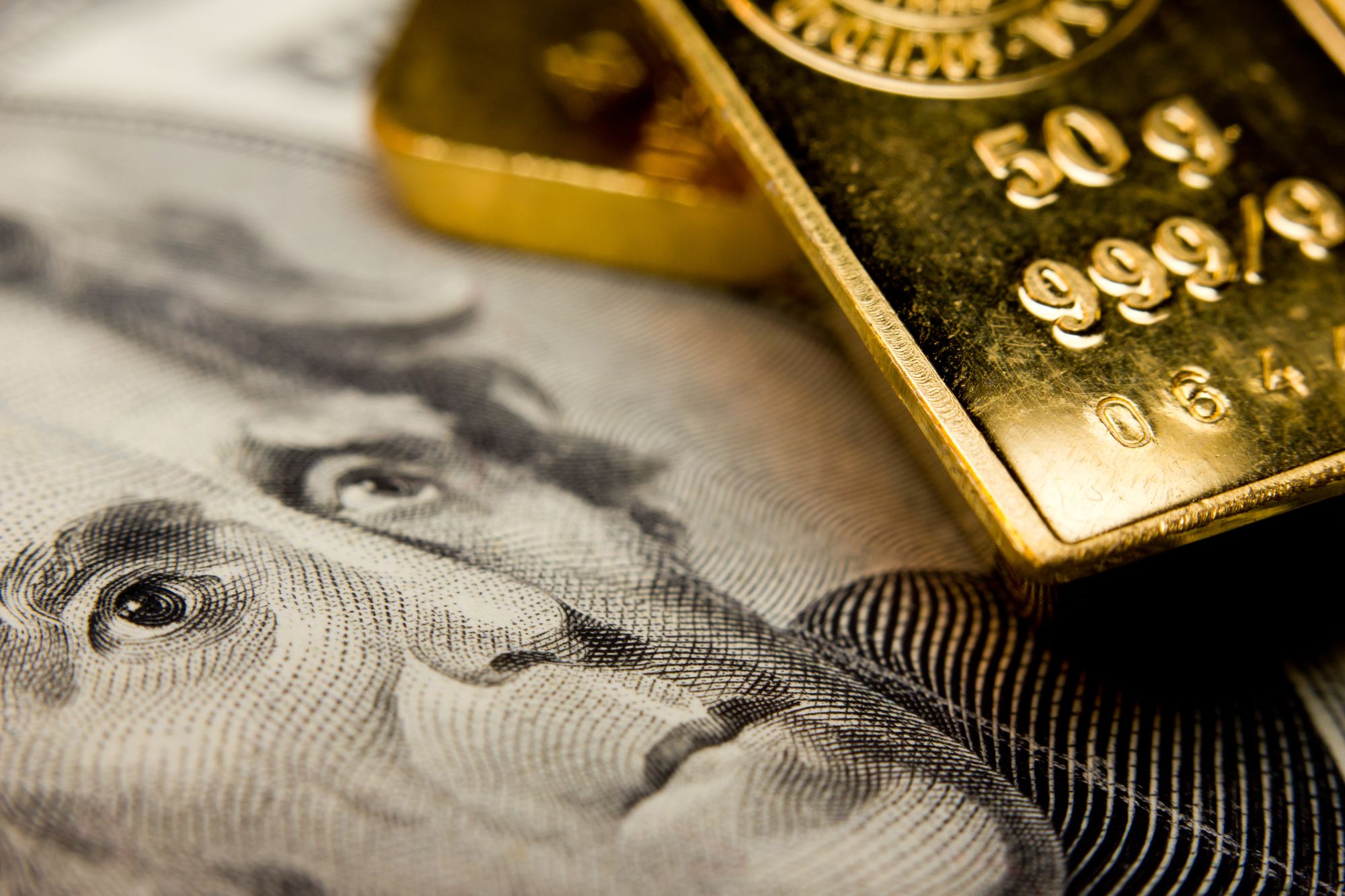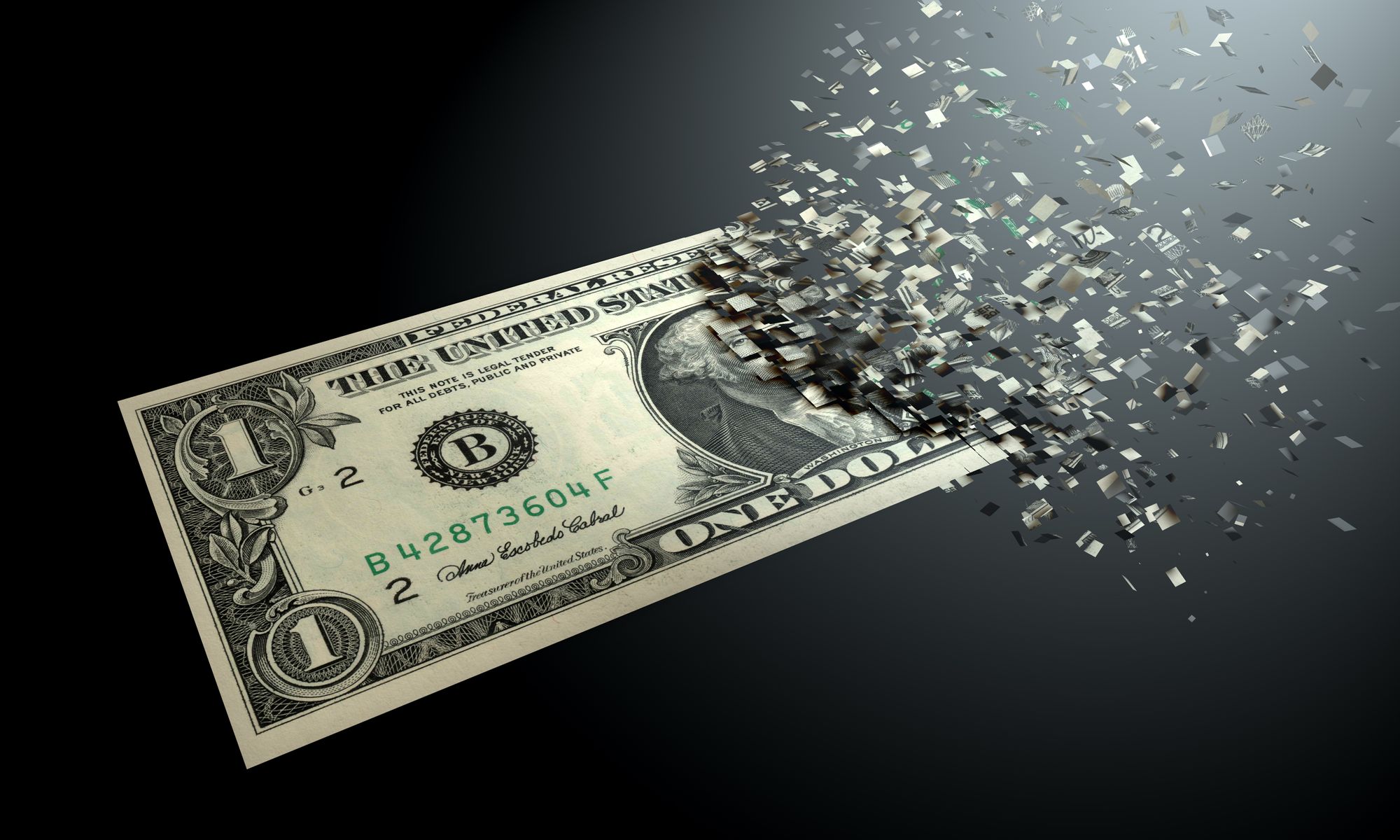Last week marked the 50th anniversary of the US stepping off the gold standard. The cryptocurrency space has inadvertently also put fiat money and gold into the spotlight by exposing some of their shortcomings. It’s always good to know more about the concepts surrounding this industry so here’s our short intro into gold standard, fiat money and what they mean for you.
What is fiat money?
Fiat money or simply fiat is currency (medium of exchange) that is established as money by government decree. Its value is maintained only through regulation and does not have intrinsic or use value. The term fiat stems from Latin fiat which is used to represent an order, decree or resolution.
It’s different from commodity money where the currency has value on its own and representative money where money represents something else with value.
Fiat money is not based on any commodity and its value can fluctuate against other currencies on other exchange markets. In order for fiat money to be successful, it needs to be protected against counterfeiting, so people cannot just print their money whenever they want.
Inflation and deflation
Fiat money is governed by a country’s monetary authority like a national bank. Their task is to keep inflation stable and predictable by introducing monetary policies like interest rates and banking reserve requirements.
Inflation is when the value of a currency declines. This is measured by the increase of an average price level of a basket of selected goods and services in an economy over a period of time. Inflation is evident in today’s monetary system. One USD or EUR is progressively worth less which is reflected in rising prices. In general this can be attributed to the increasing supply of money.
Deflation is the opposite of inflation. The currency’s buying power is increasing which is reflected in the average price of goods and services declining. The cause of this can also be a decrease in the supply of money.
The causes of inflation and deflation as well as checks to keep them at bay are pretty complex. However, there are some straightforward ways to keep them relatively stable or predictable. One such mechanism is the gold standard.
What is the gold standard?
The gold standard is a form of representative money where the value of a currency is linked directly to gold. In this system the country’s financial authority sets the price for gold in the domestic currency and would then sell and buy it at that price. This is used to determine the value of one unit of said currency as well as its value compared to other foreign currencies. If one ounce of gold is 100 USD and 5000 pesos, it is only logical that 1 USD is worth 50 pesos. That also means that if all countries are on a gold standard, there can only be one currency from which all others acquire their value and the exchange rate is always stable.
The gold standard was abandoned in Britain in 1931. It was followed by the US who first forced all Americans to convert their gold (coins, bullion and certificates) to USD. In August 1971, then president Nixon severed direct convertibility of USD to gold. Thus the global banking system entered the era of fiat money.
The transition was not a single point in time as explained in more detail here. In 1944 when WWII was coming to an end, delegated from all 44 Allied nations gathered at the United Nations Monetary and Financial Conference, also known as the Bretton Woods Conference. The result was the Bretton Woods system, which set up a system of rules to regulate the international monetary system. The system was based on gold and US dollar and used USD as a gold standard currency as a reserve currency.
With the severance of USD and gold in 1971, the Bretton Woods system ended but USD kept its place as the world’s reserve currency.

What is good about the gold standard?
It ensures inflation remains relatively low. The problem with fiat money is that the supply of money can go up and the supply of goods can go down. As long as the supply of gold doesn’t change too fast, the money supply will be relatively stable.
In simple terms the gold standard restricts the central financial authority of a country to just print more and more money, which in turn limits the inflation rate in that country. The only obstacle is proper calculation of the value of gold in the country’s currency and a sufficient rule set to keep the money supply in check.
The gold standard is not without its bad sides. It is historically linked to high short-run price volatility. Instability in short-term price levels can drive financial instability as the value of debt becomes uncertain.
Another bad side of the gold standard is that in case of recessions and depressions, the central monetary authority would be limited in its ability to help the economy. Since there is no gold standard, the monetary authority can now use monetary policy to respond to crises by lowering interest rates in recessions, raising them when there is inflation and injecting money when there is a need for that.
The inability to add money to the supply can create certain different problems. It creates periodic deflations and economic contractions that destabilize the economy and since the money cannot be created and circulated until more gold is available to back it up, deflation and economic contraction occur.
What is good about fiat money?
When compared to gold, fiat money has two properties that give it an advantage. Fiat money is more portable than gold and it can be easily divided into smaller parts. Gold and fiat both hold some of the other characteristics of good money like acceptability, durability, homogeneity and stability.
With fiat, the central banks and governments have full control over the supply of a nation’s currency. They are able to help manage economic variables such as credit supply, liquidity, and interest rates. Of course, this also comes with a risk of lending itself to instability and “bubbles” leading to financial crises like we recently saw in 2008.
Gold has remained a major financial asset for banks and countries and often serves as an indicator of economic stability. We have moved away from the gold standard entirely. The role of gold is now not to keep the price of currency but to act as a form of reserve currency and is a prominent investment asset with high returns since the 70’s.
What’s next for fiat money?
Fiat money is most likely not going away any time soon. The most likely next step for fiat is a move to digital in the form of CBDCs as explained in one of our previous blogs.
Why go digital?
With the help of blockchain technology, digital currencies promise more transparency and security at lower costs. CBDC, like existing cryptos, will aim to act as payment instruments and each unit will be unique so they will be less prone to counterfeiting and malicious activity.

The idea of holding your money in digital wallets has become more commonplace in the last few years as well. Going digital means that new opportunities will open up when it comes to operating your money.
Fiat or crypto?
If fiat goes digital is there still a case for crypto?
Cryptocurrencies have exposed quite a few flaws with the monetary system we use today. In essence they can act as money but their applications are much more widespread. Cryptocurrencies use a trustless system with stable programmatic rules that govern the supply and other aspects of the currency like transaction costs and speed.
It is unlikely that cryptocurrencies will replace fiat money as a means of payment and everyday transactions or payroll anytime soon. It is a fact, however, that cryptocurrencies have sped up the process of digitization for banks and monetary authorities. A case in point are CBDCs that are being investigated and in some cases also implemented already by around 80% of central banks worldwide.
One of the main appeals of cryptocurrency is its decentralized nature and the surrounding philosophy. Their drawbacks often stem from their greatest strengths. For example the trustless and decentralized nature prevents anyone from making a change when a transaction was erroneous or malicious. Helping victims of theft or making the system more accessible is a major friction point of the whole space.
Digital fiat currency on the other hand will need to keep up with the rising demand in cost effectiveness, speed, transparency and inclusion that is offered by cryptocurrencies today. It is also key to keep expectations in check as it is highly unlikely that central banks will be willing to give away control over their currency. Fiat money will become more useful but its nature will probably not change much. Issues with supply management will likely remain the same.
Cryptocurrency on the other hand offers new and exciting opportunities to anyone. Opportunities from volatility, trading and advanced financial instruments, low costs, anonymity, openness and a sense of freedom are just some of the benefits cryptocurrencies offer over traditional money.
In conclusion
We don’t think there will be a winner takes it all event in crypto and digital currencies at large. Sovereign countries will need to continue operating their money like today at least for the foreseeable future.
The cryptocurrency movement that started with Bitcoin has shown many flaws in the traditional system but there is a long way to go before a larger impact is seen. Replacing an established worldwide system is not an easy or quick process at all. Every solution we have seen up to now was implemented to solve a certain problem and seemingly we have made quite some progress. We’re excited to see what the future holds.